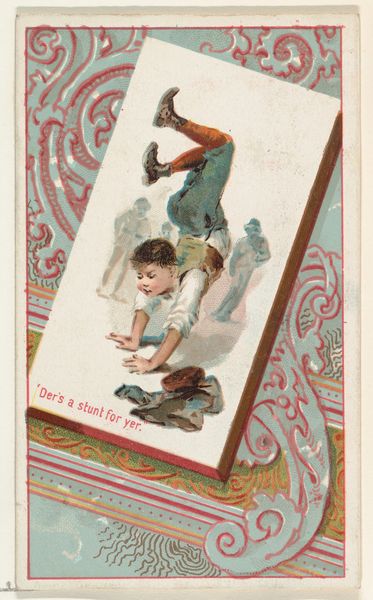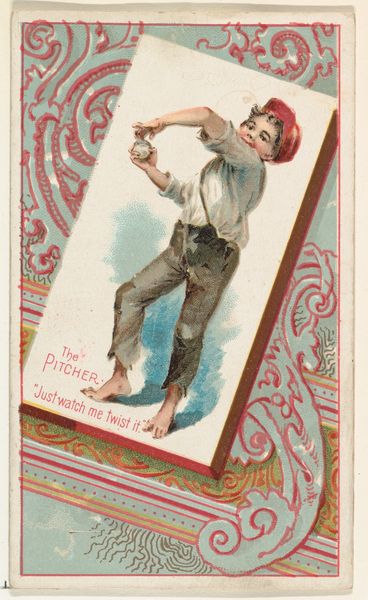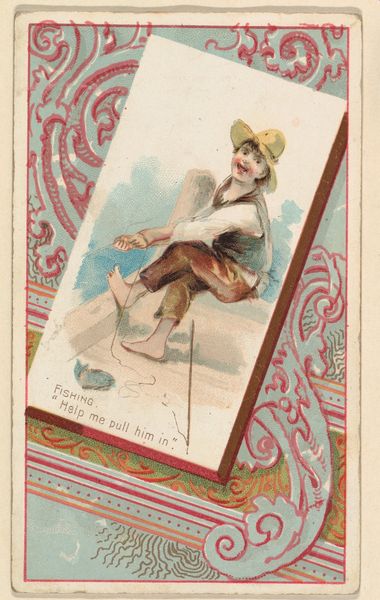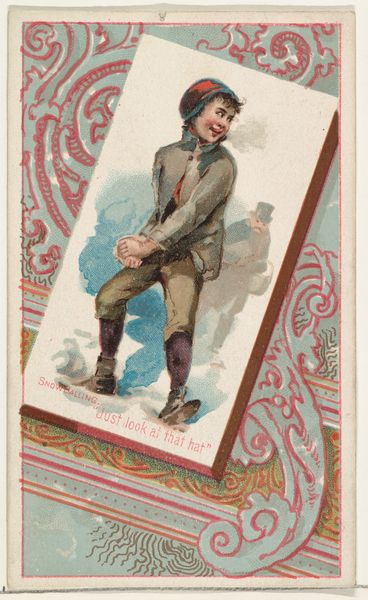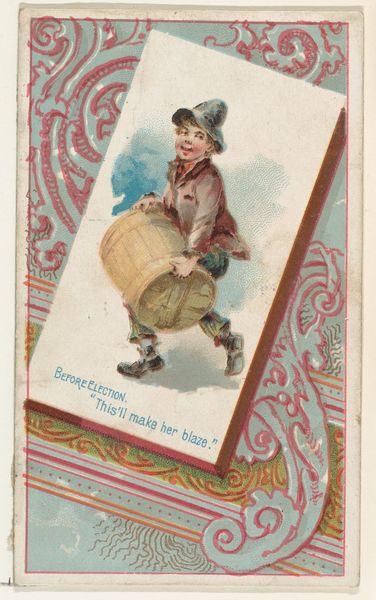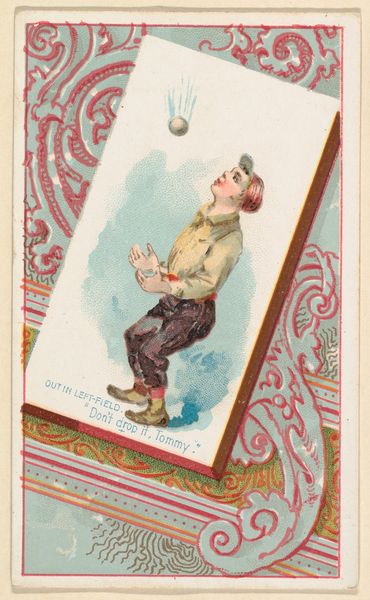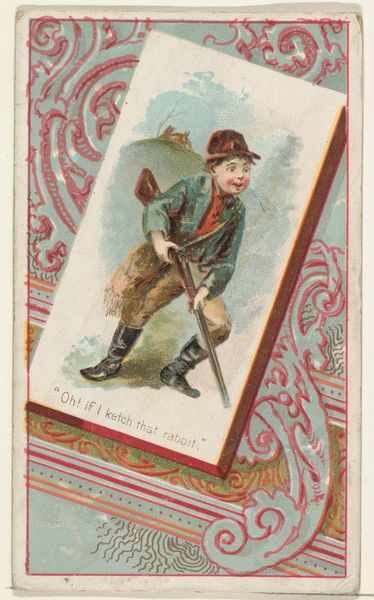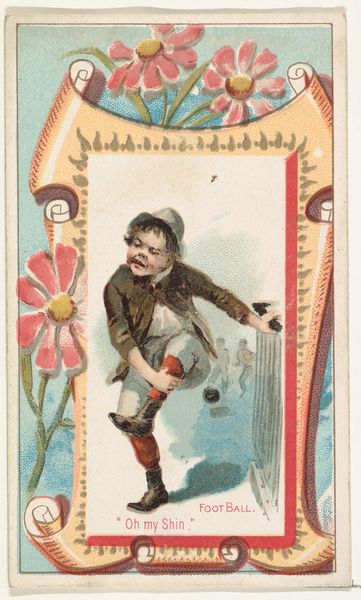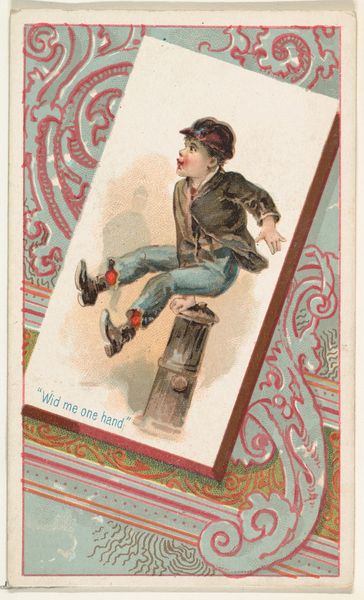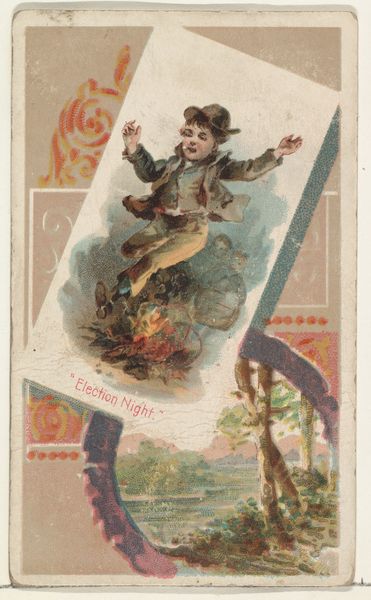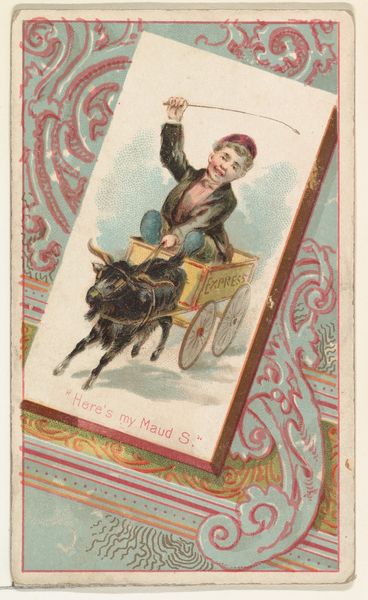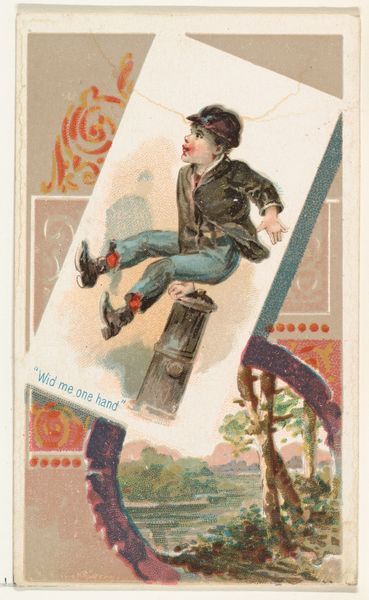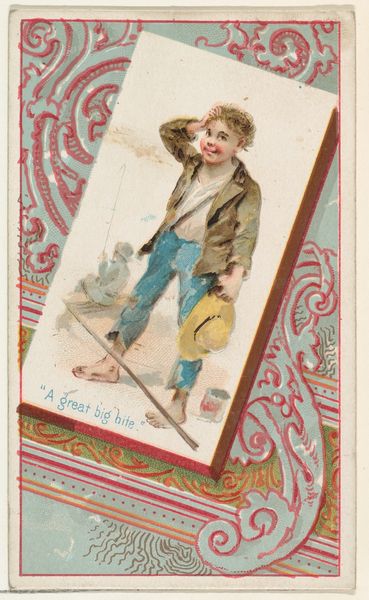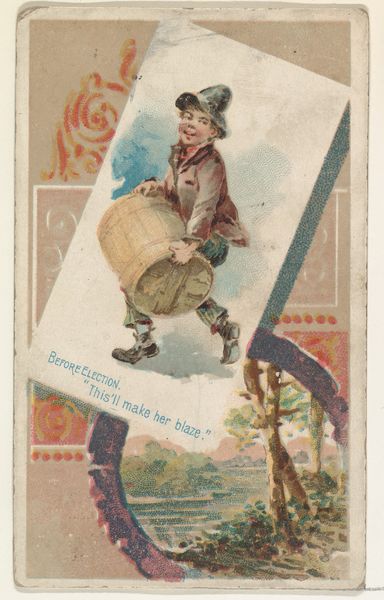
Tappy-on-the-Window-Pane, "This'll scare em sick," from the Terrors of America set (N136) issued by Duke Sons & Co. to promote Honest Long Cut Tobacco 1888 - 1889
0:00
0:00
drawing, print, watercolor
#
drawing
#
magazine cover layout
#
aged paper
#
narrative-art
# print
#
caricature
#
traditional media
#
boy
#
figuration
#
watercolor
#
folk-art
#
watercolour illustration
#
genre-painting
#
word imagery
Dimensions: Sheet: 2 3/4 x 1 1/2 in. (7 x 3.8 cm)
Copyright: Public Domain
Curator: This is “Tappy-on-the-Window-Pane, ‘This’ll scare em sick,’” a trade card from the Terrors of America set, made around 1888 or 1889 by W. Duke, Sons & Co. It’s a watercolor drawing used as a print to promote Honest Long Cut Tobacco. Editor: The first thing I notice is the humour in the scene; the boy seems so gleeful. The composition is also very striking, with the image presented at a tilted angle over the background, with bright, colourful watercolours. What's your take on this card? Curator: It’s interesting to view it through the lens of material culture and mass production. These cards were essentially a form of early advertising, cheap commodities distributed with tobacco products. We should think about the social context: late 19th century America, a rapidly industrializing nation and the rise of consumer culture. The very fact that W. Duke, Sons & Co. used such imagery is telling, as it hints at ideas about children and commerce, that helped to disseminate such values within contemporary American society. Editor: So you're saying the image itself becomes a commodity? Curator: Exactly. The labor involved in producing both the tobacco and the card, the distribution networks, and the consumption of the image, all are deeply intertwined. How do these commercial aspects challenge our traditional ideas about art and its creation? Editor: It's fascinating to consider this through those lenses. It shifts the focus from the artist's intention to the broader mechanisms of production and consumption, which often define what "art" even becomes. Curator: And perhaps complicates ideas around "high" versus "low" art. This small card reveals much about the era's economy, work, and even the commodification of childhood, a world that cheap consumer goods like this were quickly defining. Editor: That’s an eye-opening thought. I will be sure to look at art more through the scope of its material origins! Curator: Me too! Looking at things from such a vantage always enriches the historical perspective.
Comments
No comments
Be the first to comment and join the conversation on the ultimate creative platform.
